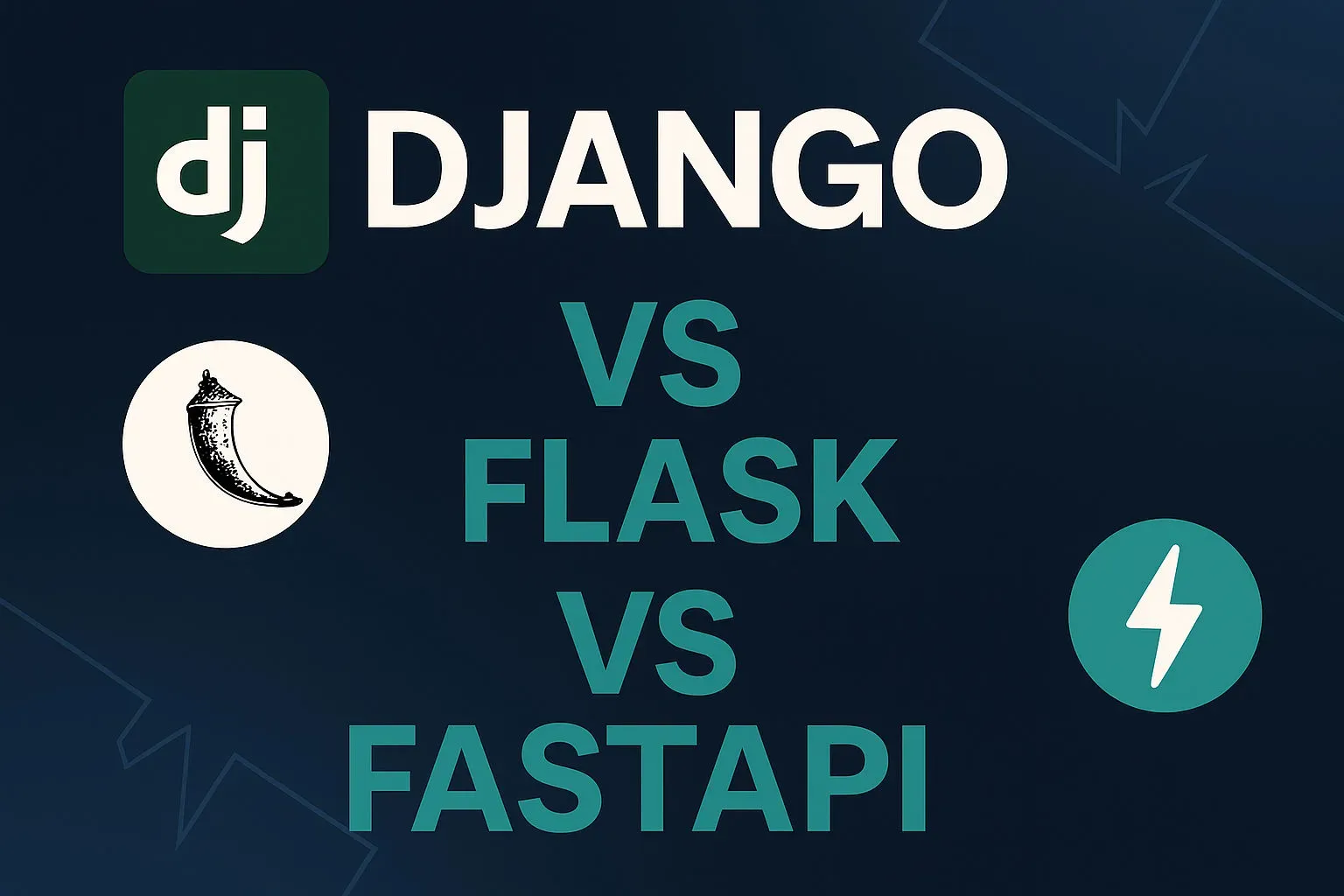Python's popularity in web development is largely due to its powerful and versatile web frameworks. Among the many options available, Django, Flask, and FastAPI stand out as the top contenders in 2025. Each offers a unique approach to building web applications, and choosing the right one can significantly impact your project's success. This guide provides a detailed comparison to help you make an informed decision.
Introduction to the Contenders
Django: The Batteries-Included Framework
Django is a high-level framework that encourages rapid development and clean, pragmatic design. It follows the "batteries-included" philosophy, providing a vast array of built-in features, including an ORM, admin interface, and authentication system.
Flask: The Microframework
Flask is a lightweight and flexible "microframework." It provides the bare essentials for web development, allowing developers to choose their own libraries and tools. This minimalist approach gives you complete control over your application's architecture.
FastAPI: The Modern High-Performer
FastAPI is a modern, high-performance web framework for building APIs with Python 3.7+ based on standard Python type hints. It's known for its incredible speed, automatic interactive documentation, and ease of use, thanks to its integration with Starlette and Pydantic.
Performance and Speed
Performance is a critical factor in web applications. Here's how the three frameworks stack up:

FastAPI leads in raw performance due to its asynchronous nature.
- FastAPI: The undisputed winner in terms of speed. Built on top of Starlette (for the web parts) and Pydantic (for the data parts), it leverages ASGI (Asynchronous Server Gateway Interface) to handle concurrent requests efficiently. This makes it ideal for high-throughput applications and microservices.
- Flask: Being a microframework, Flask's performance is largely dependent on the extensions and libraries you use. In its basic form, it's faster than Django but significantly slower than FastAPI.
- Django: As a feature-rich framework, Django has more overhead, which can result in slower performance for simple requests. However, for complex, database-driven applications, its performance is more than adequate and can be optimized with proper caching and database tuning.
Development Speed and Ease of Use
How quickly can you build and iterate? This often depends on the framework's philosophy and features.
- Django: Offers the fastest development speed for complex applications. Its built-in admin panel, ORM, and authentication system save countless hours of development time. The clear project structure and conventions make it easy for new developers to get up to speed.
- FastAPI: Also offers excellent development speed, especially for APIs. The automatic generation of interactive documentation (Swagger UI and ReDoc) is a massive time-saver. Type hints and Pydantic models reduce bugs and improve code clarity.
- Flask: Requires more setup time since you need to choose and integrate libraries for common tasks like database interaction and authentication. However, for small projects and prototypes, its simplicity can lead to very fast initial development.
Scalability
All three frameworks are highly scalable, but they approach it differently:
- Django: Follows a "shared-nothing" architecture, which allows you to scale horizontally by adding more servers. Instagram, one of the largest applications built with Django, is a testament to its scalability.
- Flask: Its minimalist nature makes it well-suited for microservices architectures. You can scale individual components of your application independently.
- FastAPI: Its asynchronous nature allows it to handle a large number of concurrent connections with minimal resources, making it inherently scalable for I/O-bound tasks.
Ideal Use Cases
| Framework | Best For | Examples |
|---|
| Django | Large, complex web applications, CMS, e-commerce sites, social networks | Instagram, Pinterest, Coursera |
| Flask | Microservices, small to medium-sized applications, prototypes, REST APIs | Netflix (internal tools), Reddit (originally), Twilio |
| FastAPI | High-performance APIs, microservices, real-time applications, machine learning model serving | Microsoft, Uber, Netflix |
Code Examples: A Quick Look
Let's see how a simple "Hello, World!" API endpoint looks in each framework.
Django
Django requires more setup with `urls.py` and `views.py`.
# views.pyfrom django.http import JsonResponse def hello_world(request): return JsonResponse({'message': 'Hello, World!'}) # urls.pyfrom django.urls import pathfrom . import views urlpatterns = [ path('hello/', views.hello_world, name='hello_world'),]
Flask
Flask is more concise for simple cases.
from flask import Flask, jsonify app = Flask(__name__) @app.route('/hello')def hello_world(): return jsonify({'message': 'Hello, World!'})
FastAPI
FastAPI is similarly concise and provides automatic documentation.
from fastapi import FastAPI app = FastAPI() @app.get("/hello")async def hello_world(): return {"message": "Hello, World!"}
Conclusion: Which Framework Should You Choose?
The choice between Django, Flask, and FastAPI depends entirely on your project's requirements:
- Choose Django when: You need to build a large, data-driven application with a lot of common features out of the box. Speed of development for complex systems is a priority.
- Choose Flask when: You need flexibility and control. You're building a smaller application, a microservice, or want to experiment with different libraries and architectures.
- Choose FastAPI when: Performance is paramount. You're building a high-throughput API, a real-time application, or serving machine learning models. You also value modern Python features and automatic documentation.
In 2025, the trend is moving towards specialized tools. Many modern systems use a combination of these frameworks: Django for the monolithic, data-heavy parts; Flask for simple, internal tools; and FastAPI for public-facing, high-performance APIs. Understanding the strengths of each will allow you to choose the right tool for the right job.
Need Help Choosing the Right Framework?
Our team of expert Python developers can help you evaluate which framework is best suited for your specific project requirements and business goals.
Schedule a Consultation →

